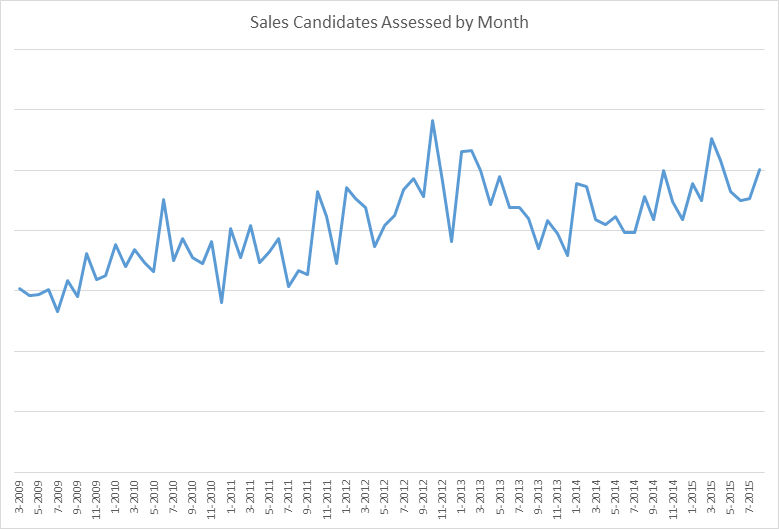hiring sales candidates
-
The Wrong Salespeople are Hired 77% of the Time
- November 13, 2018
- Posted by: Dave Kurlan
- Category: Understanding the Sales Force

94% of sales managers are optimistic about their salespeople. That’s a very surprising statistic for a couple of reasons:
50% or more of their salespeople won’t hit their quotas this year and haven’t since at least 2008.
Objective Management Group’s (OMG’s) findings from the evaluations and assessments of salespeople show that 50% of all salespeople are weak.Sales managers believe that 50% of their salespeople are good and 44% of their salespeople have potential. Of course, they are using subjective, rather than objective approaches to measuring what “good” is.
How do you measure good?
Salespeople consistently meet or exceed quota or expectations
You like your salespeople, they work hard, don’t give you any trouble, are positive, don’t miss quota by too much, sometimes bring in good customers, are advocates of the company and brand, and are good influences, etc.Unfortunately, a lot of sales managers choose the second option.
Why? Many sales managers aren’t very good at what they do! Only 10% of all sales managers are effective at both coaching and coaching consistently and when it comes to holding salespeople accountable, they aren’t much better. Review the table below:
-
Five Great Lessons That Apply to Every Company That Hires Salespeople
- November 2, 2015
- Posted by: Dave Kurlan
- Category: Understanding the Sales Force

I turned sixty years old today and everyone is asking me how it feels to be sixty. To be honest, it feels exactly the same as it felt to be fifty-nine – which is essentially the same as it felt to be 40. Nothing has changed. And speaking of nothing changing, nothing has changed over at BigBrains where two updates have come my way. The first came from someone who knows the real identity of BigBrains and suggested that I refer to them as ShitForBrains instead. She must have met them!
-
Did You Know That There is a Season for Hiring Salespeople?
- September 17, 2015
- Posted by: Dave Kurlan
- Category: Understanding the Sales Force

Did you know that when it comes to hiring salespeople, there are also seasonal trends we know to be true ?
-
Not the 3 Most Important Sales Hiring Attributes
- October 24, 2014
- Posted by: Dave Kurlan
- Category: Understanding the Sales Force

One topic that never gets stale is how to make sure that you nail sales selection. Whether or not salespeople actually fail, or they simply stick around, but fail to have an impact, the common theme is still failure to select the right salespeople. Recently, I stumbled upon this article about 3 Uncoachable Sales Attributes that you should focus on to get hiring right.
-
Look for Potential in the Next Generation of Sales Hires
- July 22, 2014
- Posted by: Dave Kurlan
- Category: Understanding the Sales Force
Make-up is nice to have. DNA, Competencies, Will to Sell and Potential are must-haves. OMG is uniquely able to determine and accurately predict whether or not a candidate’s combination of will, competencies, and DNA will allow them to succeed in a particular sales role, in your business and industry, selling to your ideal decision-maker, against your competition, with your pricing, sales cycle and challenges. It’s all about potential.
There are eight findings that point to potential:

